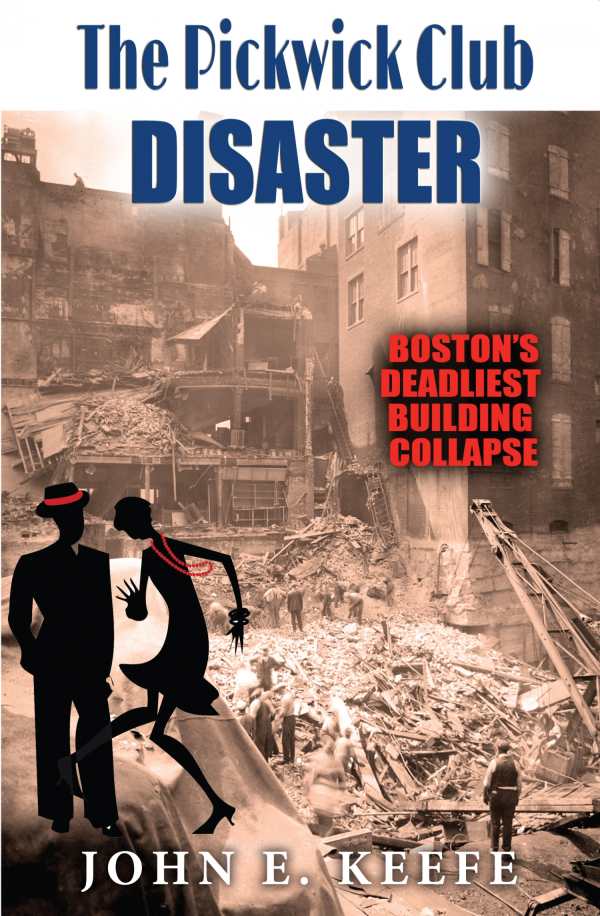The Pickwick Club Disaster
Boston's Deadliest Building Collapse
This is an important work in Boston’s historical canon that even casual followers of the city’s rich and often tragic history will appreciate.
John E. Keefe’s historical account of The Pickwick Club Disaster describes the horror of the collapse of a swingin’ club in the heart of Boston’s Chinatown. It is hardcore nonfiction that reads with the taut precision of a blockbuster thriller.
The first half of the book describes the collapse itself, including incredibly detailed accounts of its victims. The second half discusses the aftermath for the city and construction companies, noting the red tape that went all the way to the mayor’s office. Appendices provide a wealth of additional information: a list of the victims, the corporate officers involved, the jurors, House Bill 91, and other documents.
On July 4, 1925, fireworks were popping, booze was flowing, and cops were having a hard time keeping order on the streets. At 3:00 a.m., the Pickwick Club, an infamous five-story speakeasy, collapsed with 125 people inside.
Forty-four people died, including entertainer Johnny Duffy. At first, the dancing was blamed. Partiers were dancing the Charleston to the orchestra’s “Twelfth Street Rag” immediately before the collapse; Boston mayor James Michael Curley unsuccessfully attempted to ban the dance. Many area clubs were closed pending a safety inspection.
Keefe’s research reveals that energetic dancers didn’t cause the collapse, though. Three months earlier, a fire badly damaged the roof and top three floors of the building. Repairs were made, but they were sloppy and subpar. The integrity of the building’s structure was weakened. The city was later blamed for allowing the building to reopen at all.
The care with which Keefe lays out each detail and explains what happened to everyone after the collapse indicates deep and infectious investment in the subject matter, and the integrity of the research is apparent. The result is an important work in Boston’s historical canon that even casual followers of the city’s rich and often tragic history will appreciate.
The text is easy to navigate; information is parceled out with exactitude. Its structure is effective for information retention, divided between an account of the event itself and an exploration of its aftermath. Its style is conversational, relating history as a story rather than as a dry account. A few pictures bring the night more fully to life, though the inclusion of more photographs, or a section of photographs, would have enhanced it even more.
The Pickwick Club Disaster is an impeccably researched historical account certain to have wide appeal.
Reviewed by
Katie Hardy
Disclosure: This article is not an endorsement, but a review. The publisher of this book provided free copies of the book and paid a small fee to have their book reviewed by a professional reviewer. Foreword Reviews and Clarion Reviews make no guarantee that the publisher will receive a positive review. Foreword Magazine, Inc. is disclosing this in accordance with the Federal Trade Commission’s 16 CFR, Part 255.

